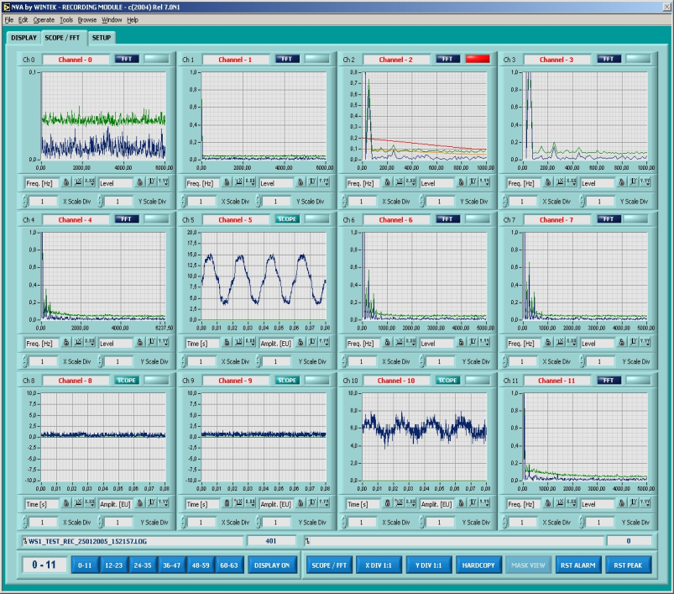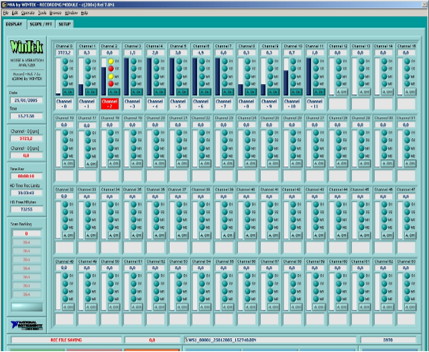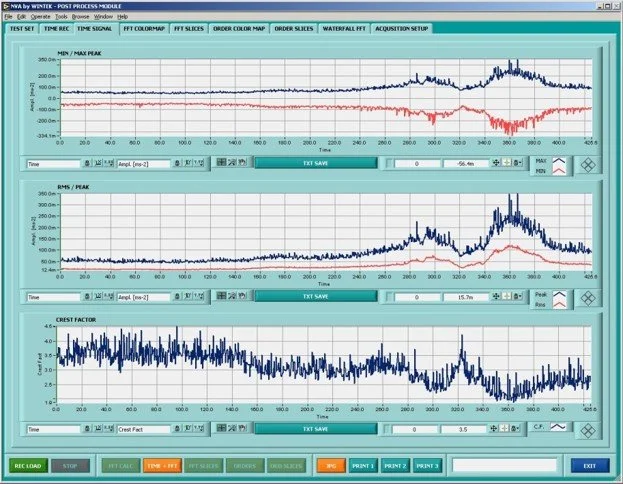VBA Monitor
Distributed Vibration Monitoring System
The distributed architecture system, VBA Monitor, is specifically designed for the acquisition, measurement, and recording of vibration events, as well as the management of related alarms, both for industrial applications and seismic monitoring.
-
The distributed architecture system is specifically designed for the acquisition, measurement, and recording of vibration events, as well as for managing related alarms, both in industrial applications and seismic monitoring.
Based on the application objectives, the system can be equipped with the most suitable transducers for the purpose (piezoelectric or capacitive accelerometers) and signal acquisition devices with AD converters ranging from 16-bit to 24-bit, DC/AC coupling, and sampling frequencies up to 50 kS/s.
Specifically, for basic seismic monitoring applications, a configuration is typically used that includes IEPE accelerometers and distributed architecture acquisition systems equipped with 16-bit converters and anti-aliasing filters, with per-channel sampling frequencies up to 1 kS/s.
Core Functions
Each monitoring station can independently and in real-time perform signal acquisition, as well as analyze overall levels (optionally filtered) and FFT on signals from accelerometers (with options for single or double integration).
Alarm thresholds can be set for both overall levels and FFT masks. Each station can record both overall levels and spectra at user-defined intervals in convenient log files in text format. Additionally, either upon user request or in the event of an alarm threshold being exceeded, the station can also record "raw" signals from the transducers onto solid-state memory.
From the control PC, it is possible to download the data recorded on each station, enabling the user to access saved data in standard formats for in-depth analysis using specific post-processing applications.
-
The distributed architecture system is based on signal acquisition and conditioning stations equipped with independent processing and recording capabilities for signals and events.
Each station can be connected to up to three accelerometers (up to nine in the more advanced version) and performs real-time measurements of overall values, limit checks with alarm management, and FFT analysis with spectral mask verification. Additionally, each station is equipped with internal memory and an SD card for logging and signal recording in case of alarm events.
Each station can also be connected to a supervision and control unit (typically a Windows-based personal computer) via an Ethernet network. From this unit, it is possible to monitor the operational status of each detection station, download log data, and distribute configuration files as needed.
Optionally, a digital I/O system can be installed near the supervision PC to manage alarms and operational states.
-
The distributed vibration monitoring system is ideal for various industries and scenarios, including:
1. Seismic Monitoring
Earthquake Monitoring: Real-time detection of seismic activity and alarm generation in earthquake-prone areas.
Structural Health Monitoring: Measuring vibrations in buildings, bridges, and other infrastructures to assess stability during seismic events.
Dam and Tunnel Monitoring: Ensuring the safety and operational integrity of critical structures subjected to ground movements.
2. Transportation and Civil Engineering
Railway Monitoring: Monitoring track conditions, vibrations, and the integrity of railway infrastructure.
Construction Sites: Assessing vibrations caused by construction activities to ensure compliance with safety standards and minimize environmental impact.
3. Energy Sector
Wind Turbines: Monitoring vibrations in wind turbine blades and gearboxes to optimize performance and prevent failures.
Oil & Gas: Monitoring equipment vibrations in refineries, pipelines, and offshore platforms for safety and efficiency.
Nuclear Plants: Continuous vibration monitoring of critical components such as reactors, turbines, and cooling systems to ensure operational safety and prevent catastrophic failures.
4. Environmental and Geophysical Studies
Geotechnical Monitoring: Real-time data collection for landslide prediction and soil stability analysis.
Volcanology: Monitoring vibrations caused by volcanic activity to enhance early warning systems and disaster preparedness.
The system's modular and flexible design ensures it meets the specific needs of these diverse applications.
-
Supervision System
PC Control Room
Processor: Intel-based
Operating System: Windows 10/11
Local Network: Ethernet 100/1000
Acquisition Systems
Model: VBA-Mon-HW3
AD Converters: 16-bit + Anti-alias Filter – Up to 3 channels
Input Range: From ±1 V to ±5 V
Sampling Rate: Up to 5 kS/s per channel
Transducer Power Supply: IEPE (24 VDC - 4 mA)
Power Supply: 24 VDC – Max 60 W
Connectivity: Ethernet 100/1000, RS232, CAN, USB, SD Card
Storage: Up to 2 GB on SD Card
Protection Rating: IP65
Operating Temperature: -20/+50 °C (optional extended range available)
Software Applications and Features
Channel Setup
Sensitivity
Filters
Limits (Max/Min)
Integration
Analysis
Time Analysis (Overall – Max and Min)
FFT Analysis
Logging
Measurement Logs: Event-based or Manual Mode
Alarms
Alarm Configurations and AND/OR Tables
Users
User Mode: View and Log access
Admin Mode: Channel and Limit Configuration
VBA MONITOR - Architecture Diagram




